Audit of all my work.
Portraits
What I did- For this topic of portraiture I used the studio in school to take my images. I experimented with three different types of lighting, which were;
- Rembrandt
- Chiaroscuro
- Butterfly Lighting
I also experimented with different backgrounds (black and white) and I also experimented with editing (creating black and white copies and coloured copies). I also had my models do different poses, that I think looked best.
Rembrandt
Rembrandt lighting is used to create shadows and contrast, and the ‘triangle of light’, beneath someone’s eye. This causes an element of drama and psychological depth onto the individual, who’s photo is being taken. Rembrandt lighting is an effective device to draw the eye. It is widely used in promotional photographs of film stars showing them in a dramatic and eye-catching way. An example of these film stars is Marylin Monroe and Keanu Revees;
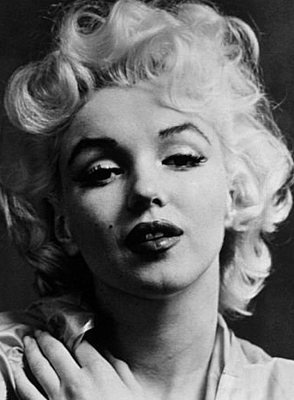
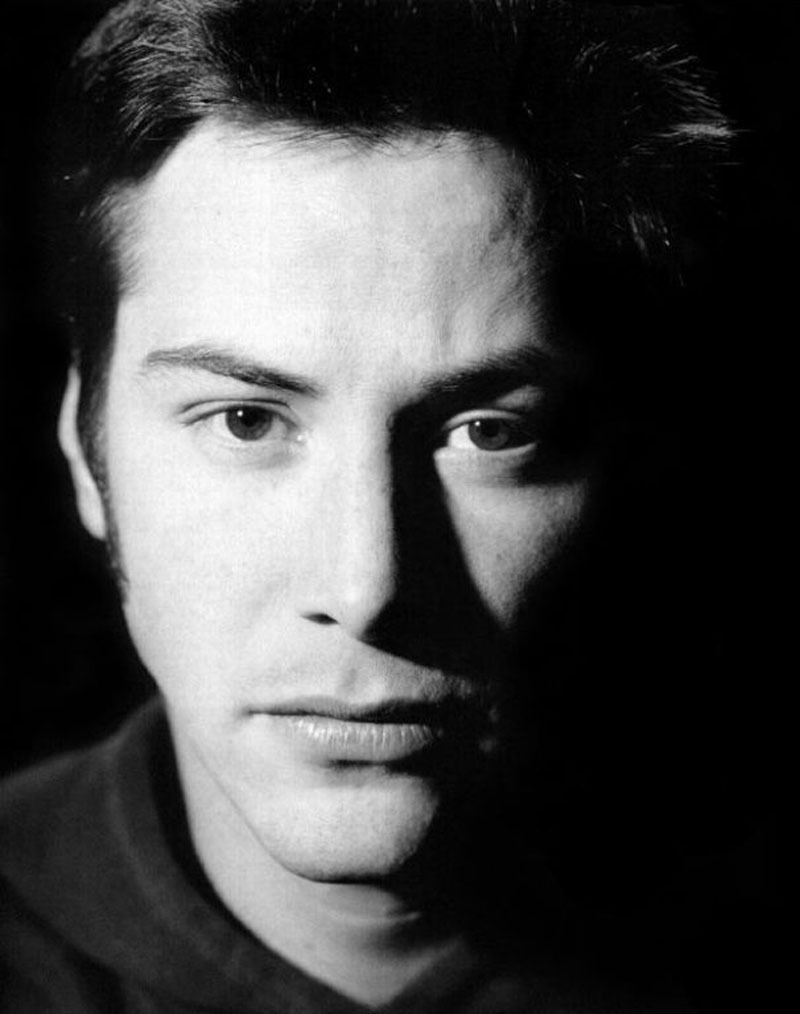
How I did it-
Light: Lighting styles are determined by the positioning of your light source. Rembrandt lighting is created by the single light source being at a 40 to 45-degree angle and higher than the subject. Use cans use both flashlights and continuous lights.
Lens: Use a 35mm or 50mm if space is at a premium, or if you’re looking at including more of the subject than just the head and shoulders. A 50mm works really nicely for portraits and will give a nice depth of field if you’re shooting at a shallow aperture. But a 35mm will give you a wider point of view and is great to fit more of the body in of your subject.
Butterfly Lighting
Butterfly lighting is a type of portrait lighting technique used primarily in a studio setting. Its name comes from the butterfly-shaped shadow that forms under the nose because the light comes from above the camera. You may also hear it called ‘paramount lighting’ or ‘glamour lighting’. Butterfly lighting is used for portraits, because it is a lighting that flatters almost everyone, as it can highlight cheekbones and create shadows under them, as well as under the neck, which makes the model look thinner. This makes it the most commonly used lighting setups. This lighting has also been used for famous stars, from classic Hollywood and that’s why it’s also called Paramount lighting.
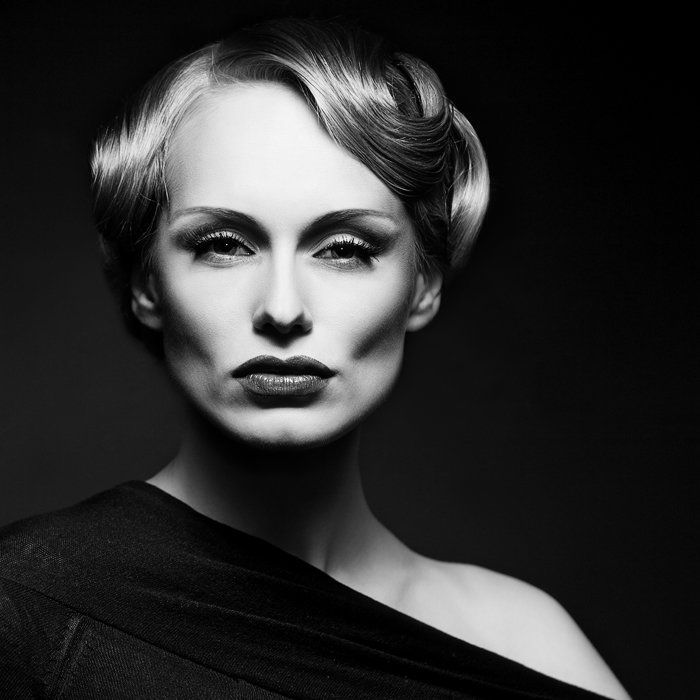

How I did it-
Lighting: Butterfly lighting requires a key light that can be a flash unit or continuous. If continuous, it can be artificial or natural. In other words, you can use strobes, speed lights, LEDs or even the sun. A butterfly lighting effect refers to the setup and not to the quality of light – it can be soft or hard light depending on the effect you want. If you want to create a soft light, you’ll need to use modifiers. A beauty dish is perfect for glamour photography as it distributes the light evenly and smooths the skin. You can also use a softbox or an umbrella. Instead, if you want to have hard light, you can leave the light source as it is. Alternatively, you can use grid spots to direct it and create different effects.

Experimentation: Once you have the key light set up, it’s time to fill the shadows. You can use a reflector to bounce the light back up and soften the shadow under the chin and the one from under the nose. To do so, position the reflector under the subject’s face. Start at waist level and see how it looks. If the shadows are still strong, move it closer to the face and so on. Experiment with different positions to achieve different effects. You can also change the colour of the reflector. A white one will give you a neutral tone, while a golden one gives a warming overcast. Once you’re happy with your butterfly lighting, direct the model to have a striking fashion pose or whatever the desired pose or expression you’re looking for. Just keep in mind that the subject’s face needs to be towards the light in order to have the butterfly shadow under the nose.
Chiaroscuro
Chiaroscuro is a visual element of art, which is defined as a bold contrast between light and dark. It is called chiaroscuro, because it is an Italian word meaning light dark. A certain amount of chiaroscuro is the effect of light modelling in painting where 3-dimensional volume is suggested by highlights and shadows. It first appeared in 15th century painting in Italy and Flanders (Holland), but true chiaroscuro
developed during the 16th century, in Mannerism and in Baroque art. Dark subjects were dramatically lighted by a shaft of light from a single constricted and often unseen source was a compositional device seen in the paintings of old masters such as Caravaggio and Rembrandt.
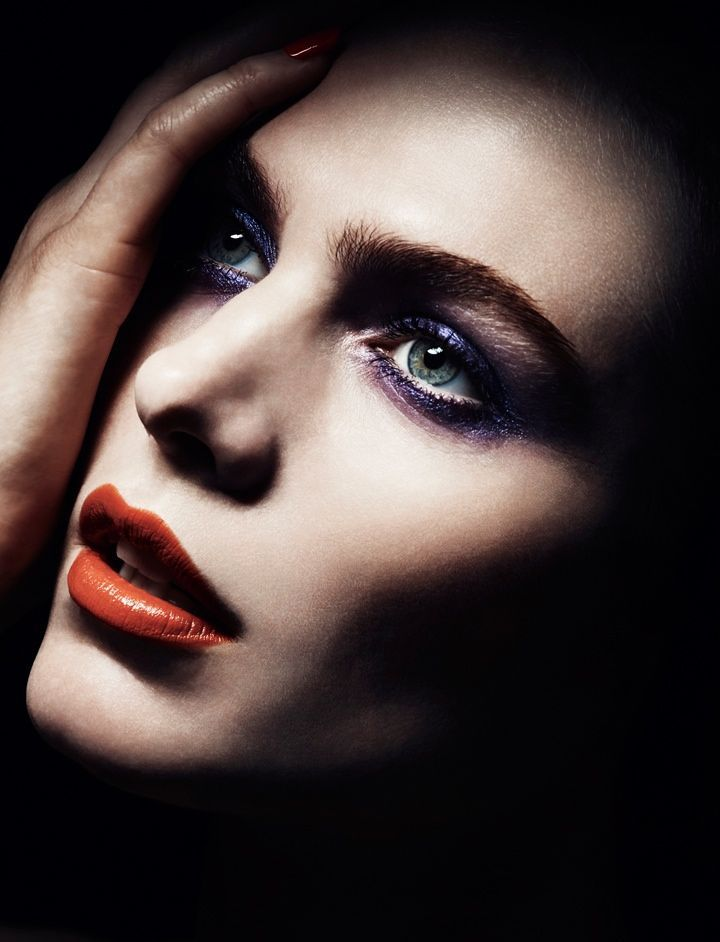
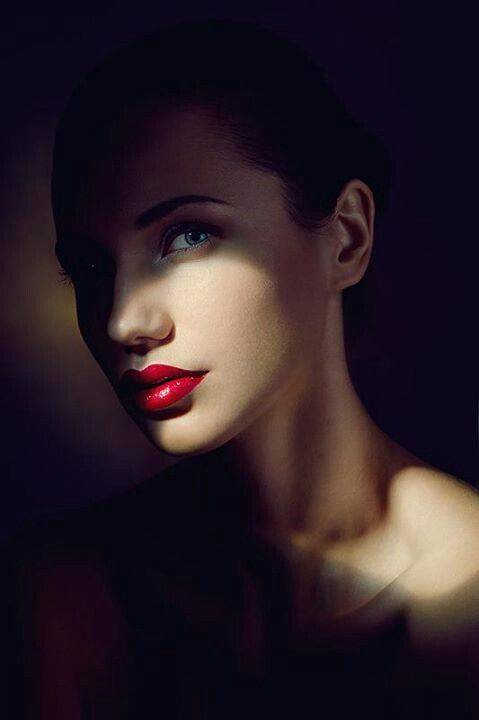
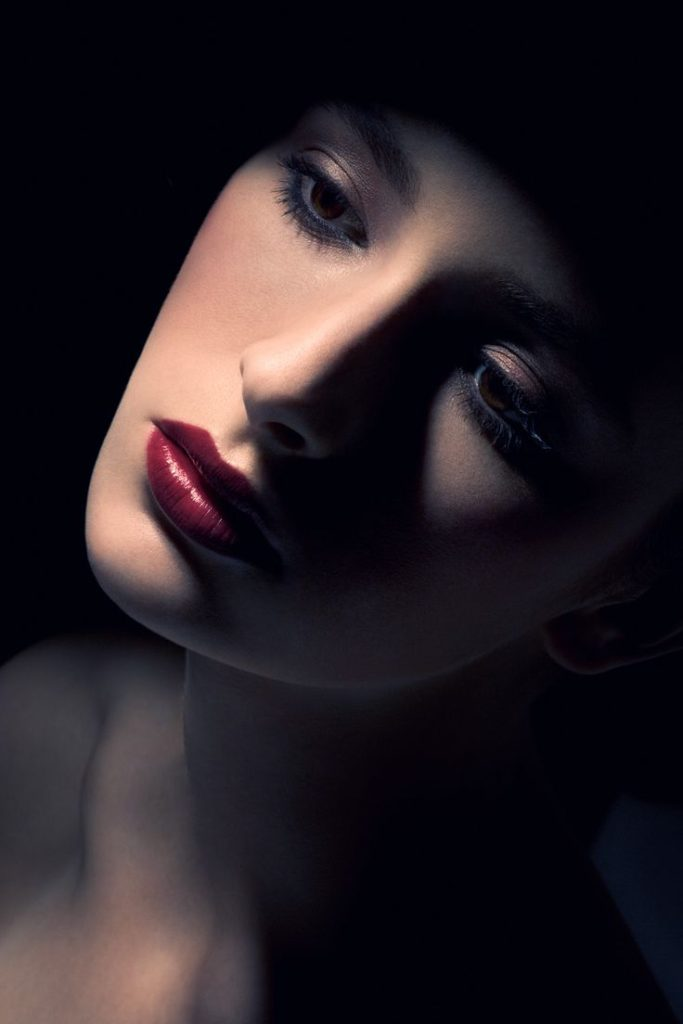
How I did it-
Chiaroscuro lighting uses one key light and a variation using a reflector that reflects light from the key light back onto the sitter.

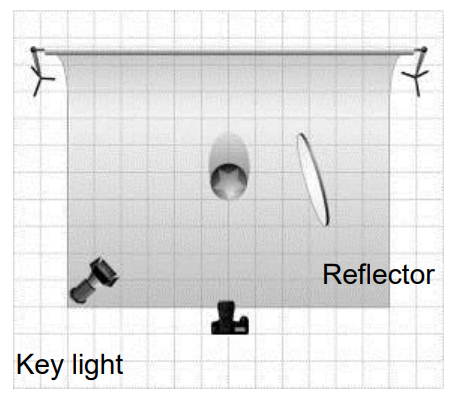
My Images
Rembrandt
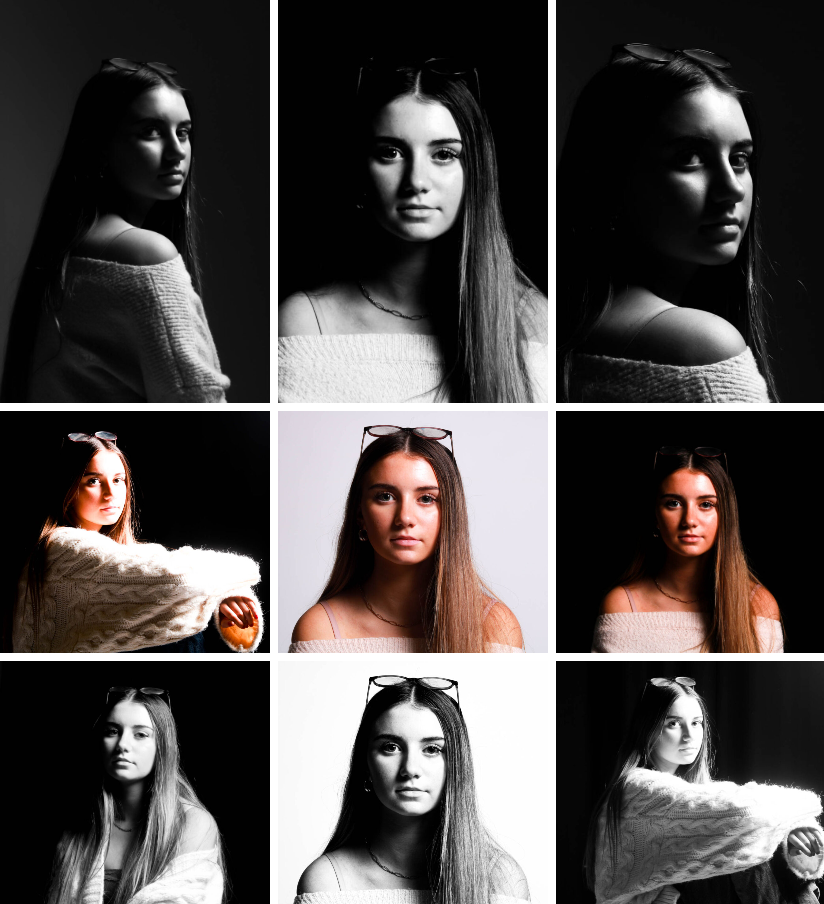
Butterfly Lighting
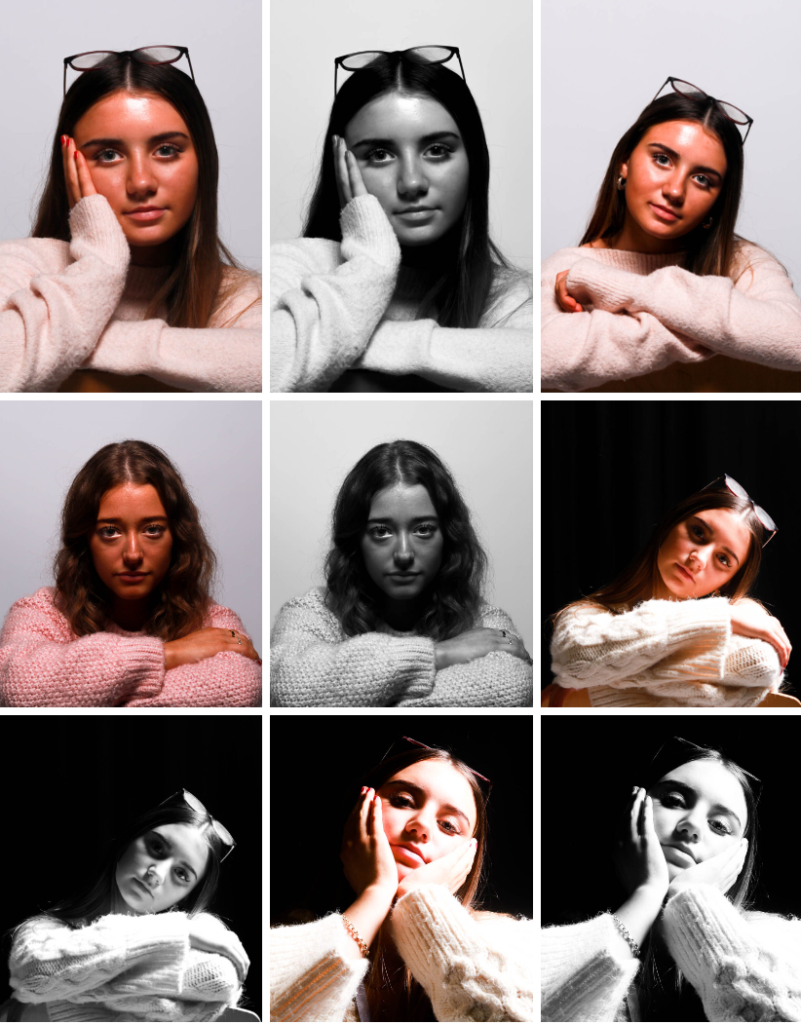
Chiaroscuro
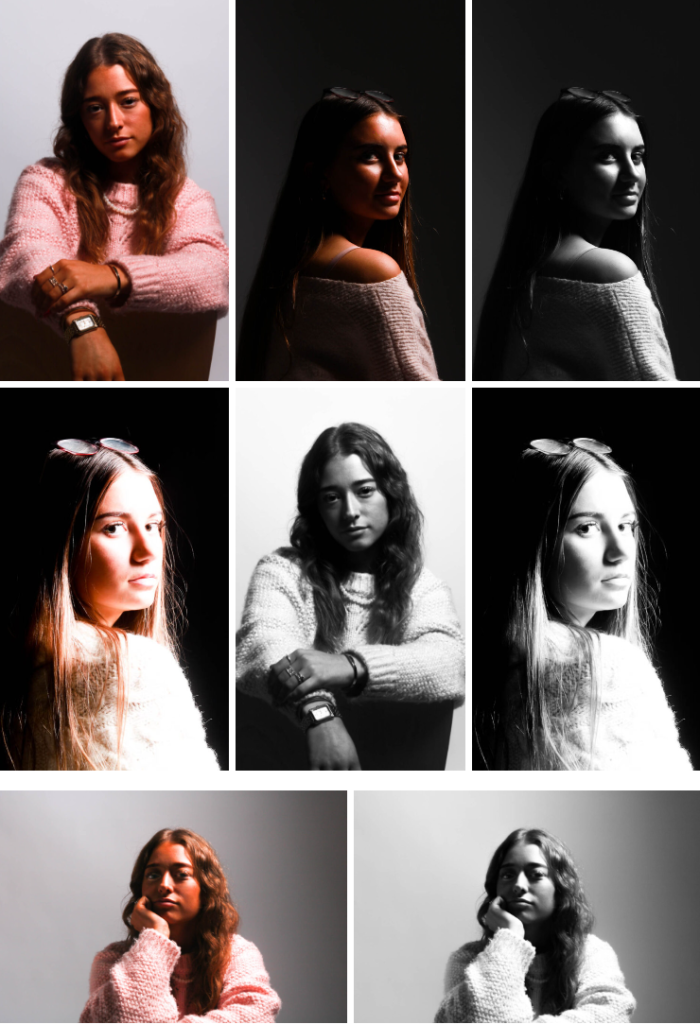
Evaluation
What went well- I think these images came out really well, because I displayed the different types of lighting well and my models made the images more exciting by doing different poses. I also like the editing in these images, especially the black and white copies. I also really enjoyed taking these images, because I much prefer taking pictures of people, rather than landscapes for example.
Even Better If- Next time, I would want to experiment with more models and poses. I would also like to create more black and white copies of my images, because I much prefer black and white images over coloured images.
Environmental Portraiture
What I did- For this photoshoot, I took photographs of people in their natural environments eg. work and school.
How I did it- I visited shops through town, such as the market, Love Bird Pottery Shop, Next, Schuh etc. I visited these specific places, because this was where my friends were working, so I was able to get photos of them there. I also wanted to take photos of my friends, so that I could get them to pose, and not feel awkward about it. I also went round school and took photos of students and teachers in their natural environment.
Environmental portraits can reveal somebodies life, like where they work, or what their home is like, or what they do at home. These portraits can be used to have an insight on another’s life, or to have an insight on a profession. These portraits can also be called historical, as they may show jobs, which are no longer professions, or show how homes used to look and what people would do in their homes. The images also shows people not in the present. These environmental portraits help feel a connection between the photographer and the person getting their picture taken, unlike how it would be on a phone.

My Images
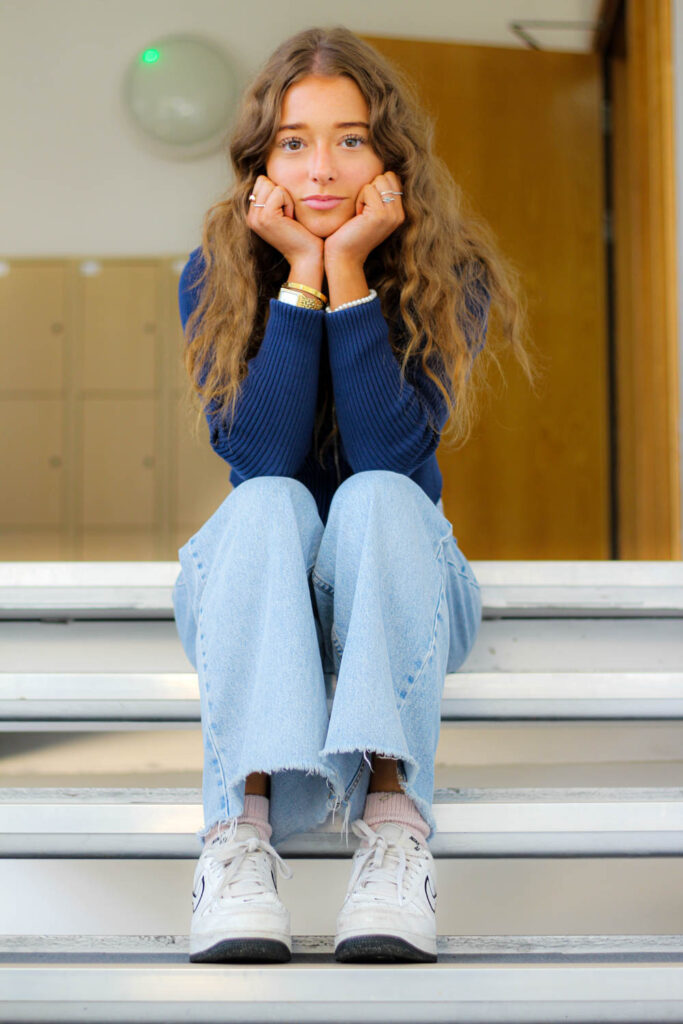
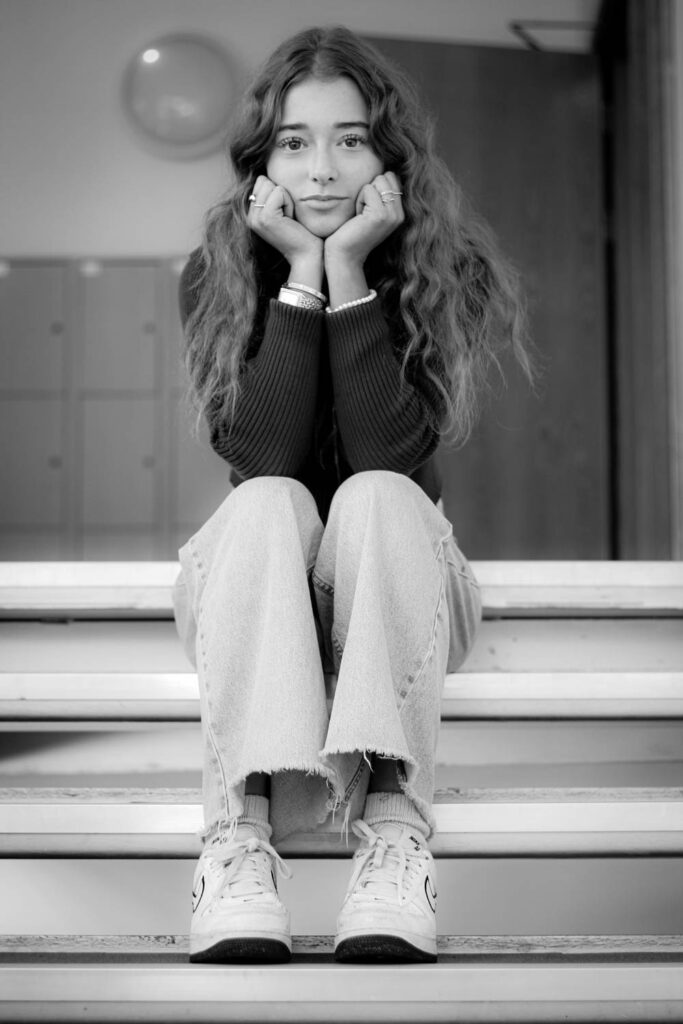


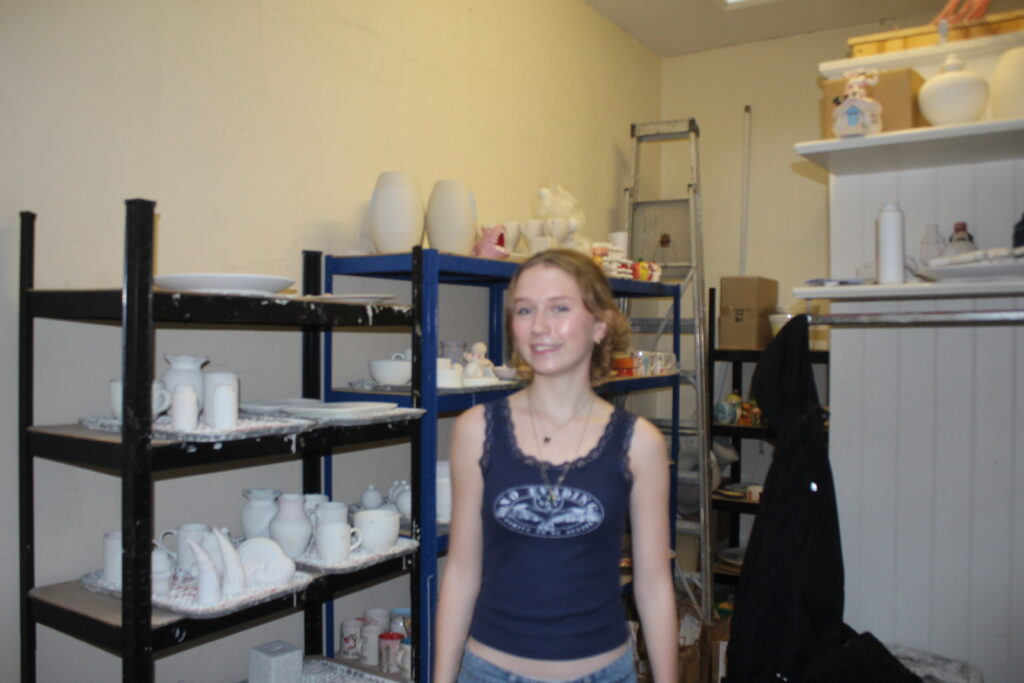
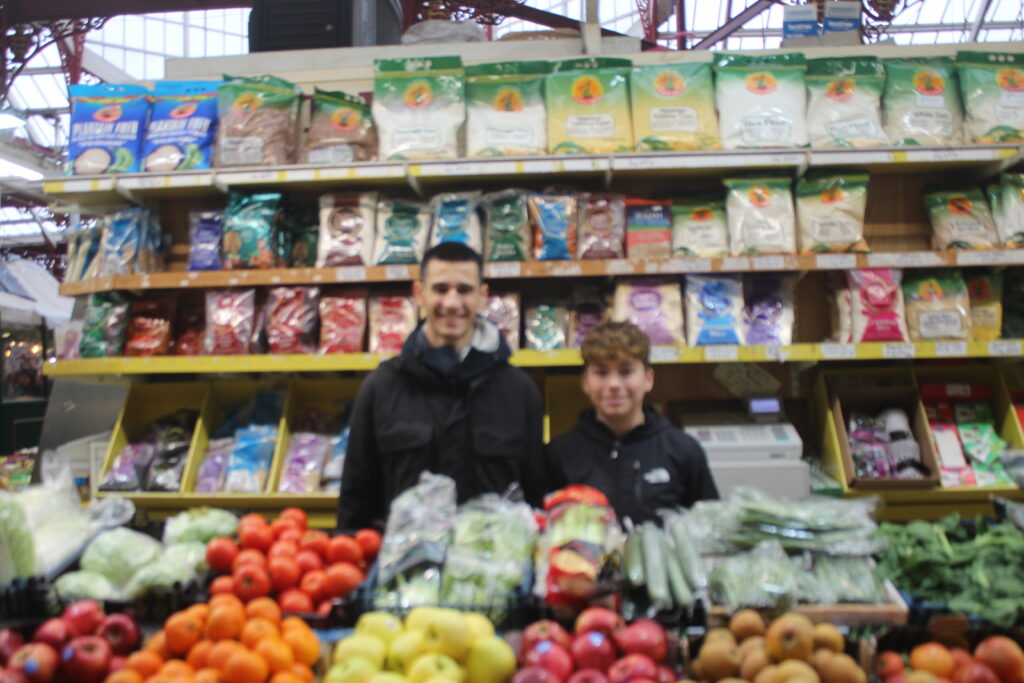
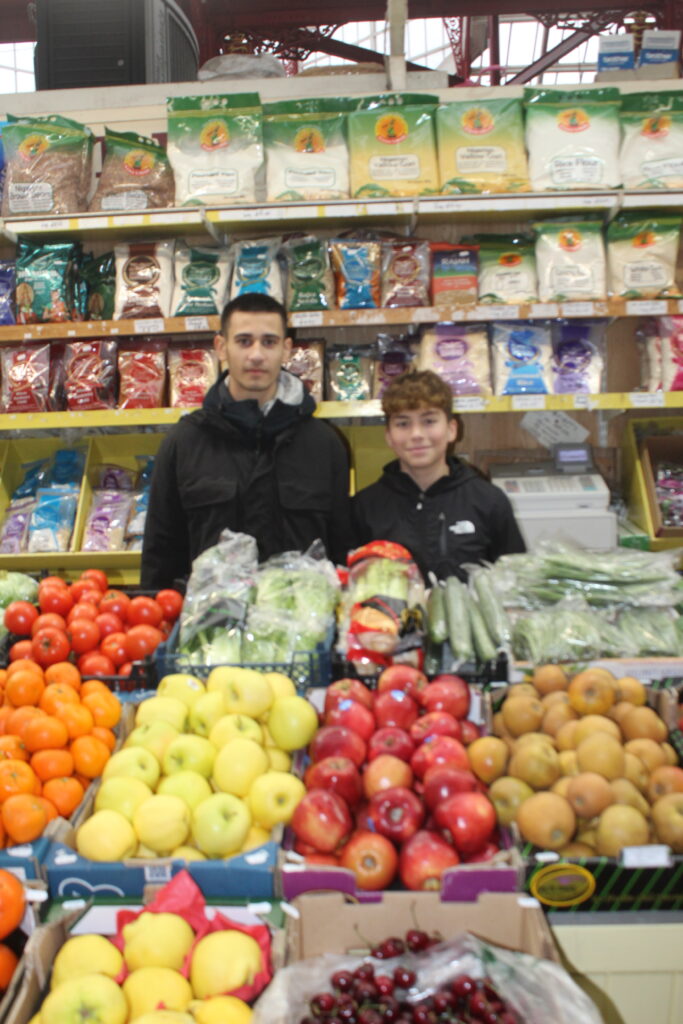


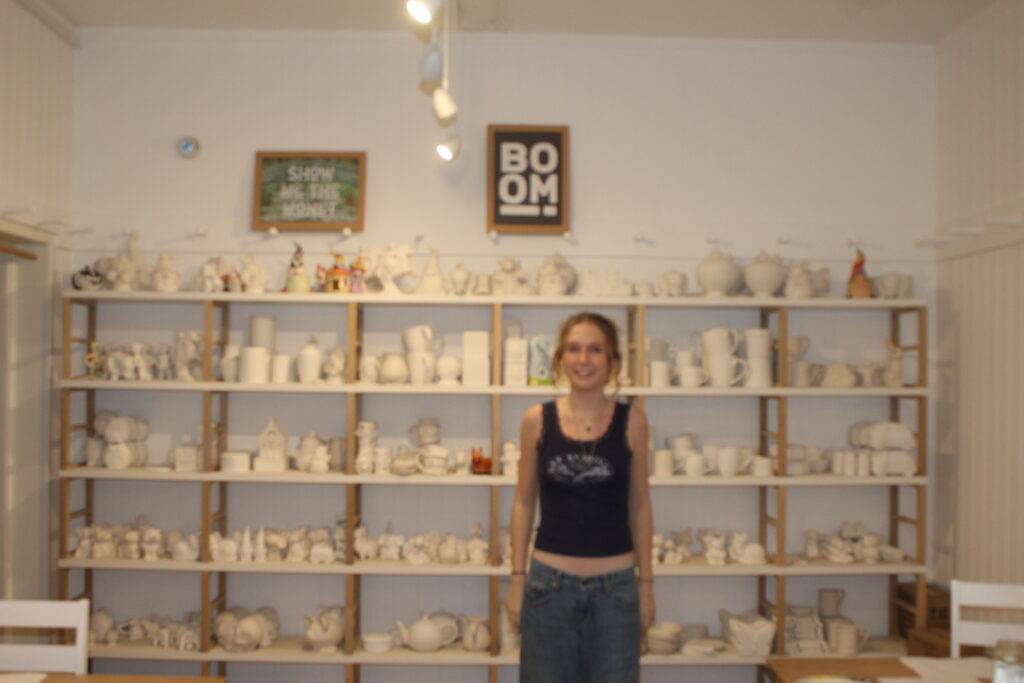

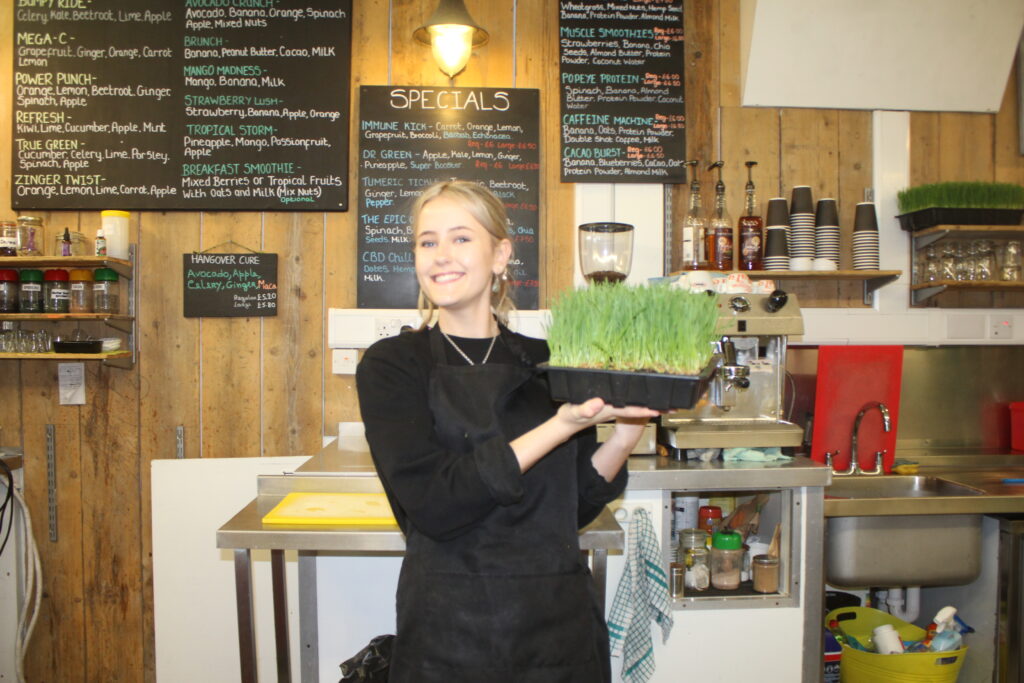
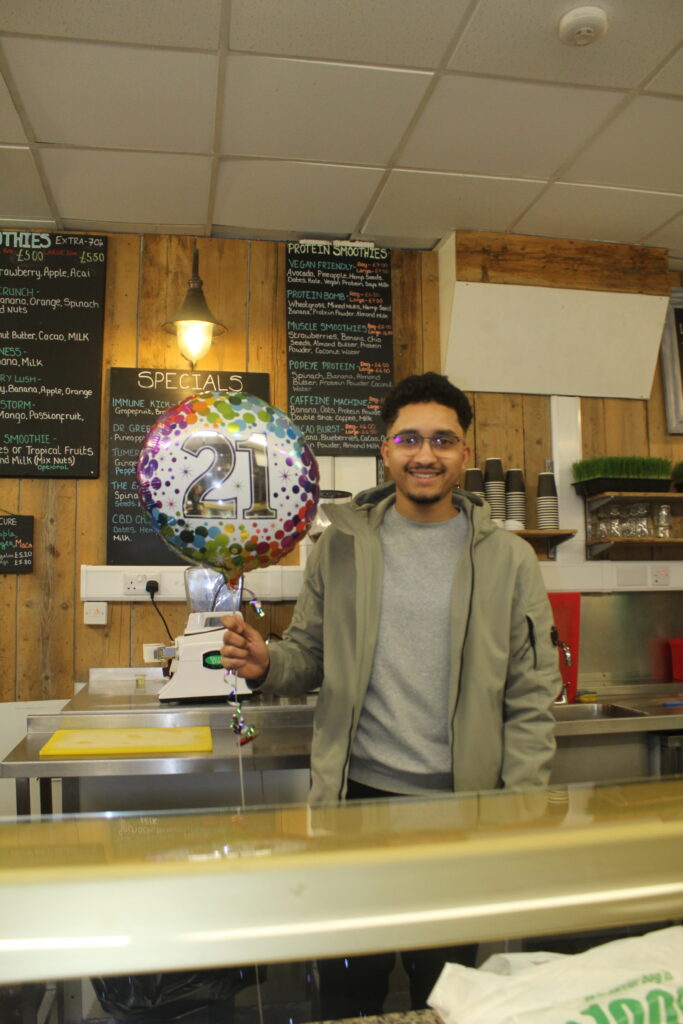
Evaluation
What went well- I really enjoyed this photoshoot, because I really enjoy taking images of people. However, this also allowed me to move around and take pictures in different places, with different scenery, which I also really enjoyed. I also enjoyed being able to pose my models how I wished, because this allowed me to make my images exactly how I want them. I also enjoyed editing these photos and making black and white copies.
Even better if- Next time, I would make sure to check my camera settings, because some of my images are slightly blurry. I would also create more black and white copies of my images. Another thing I would do differently is maybe photograph strangers, so I can get out my comfort zone, and I would go to other places than school and work. I may also try different places of work eg restaurants, offices etc. instead of just retail.
Femininity & Masculinity
What I did- For this photoshoot I explored what was meant by masculinity and femininity. I explored their different stereotypes and the meanings behind them.
How I did it- I took photoshoots in the studio, as well as outside. I used different poses and props to display the different stereotypes. For example, I made a boy pose with his muscles, because a stereotype is that men are strong. I also had girls pose with makeup and other girl related products to present the feminine stereotype. I also used different lighting (pink and blue) to portray the stereotypes.
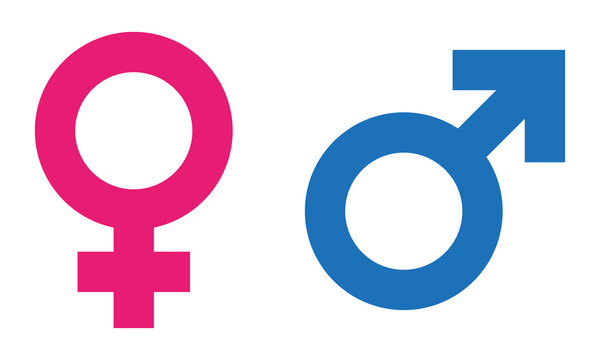
My Images

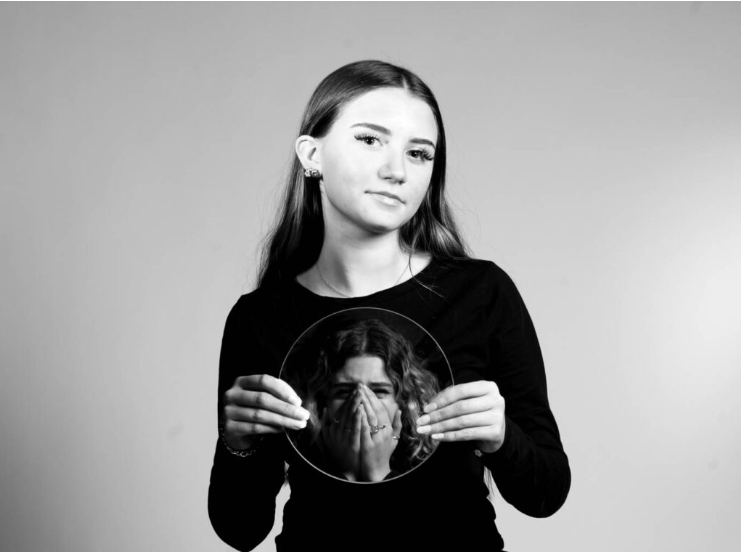
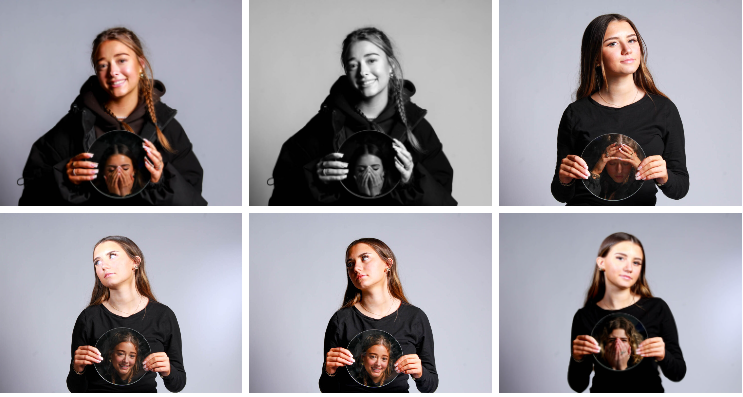
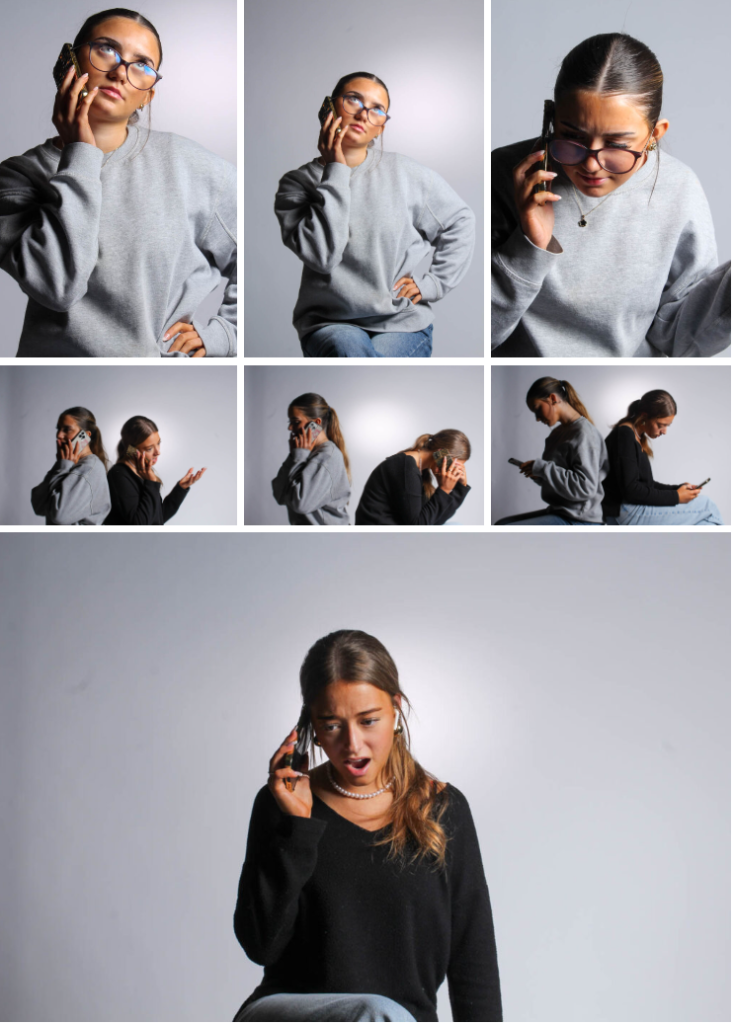

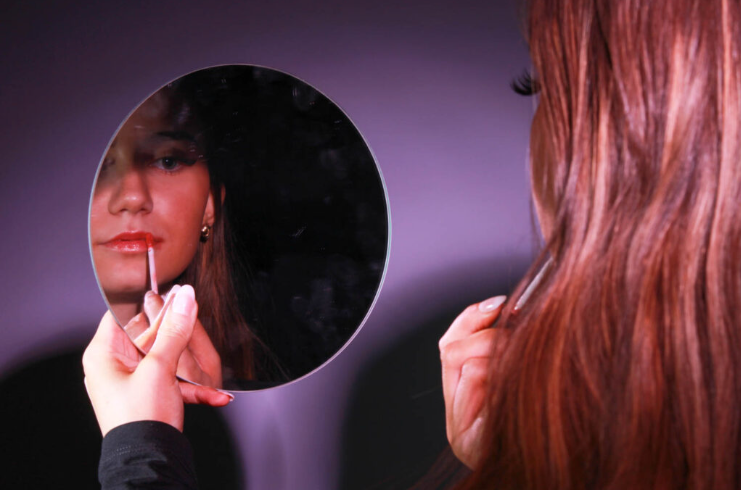
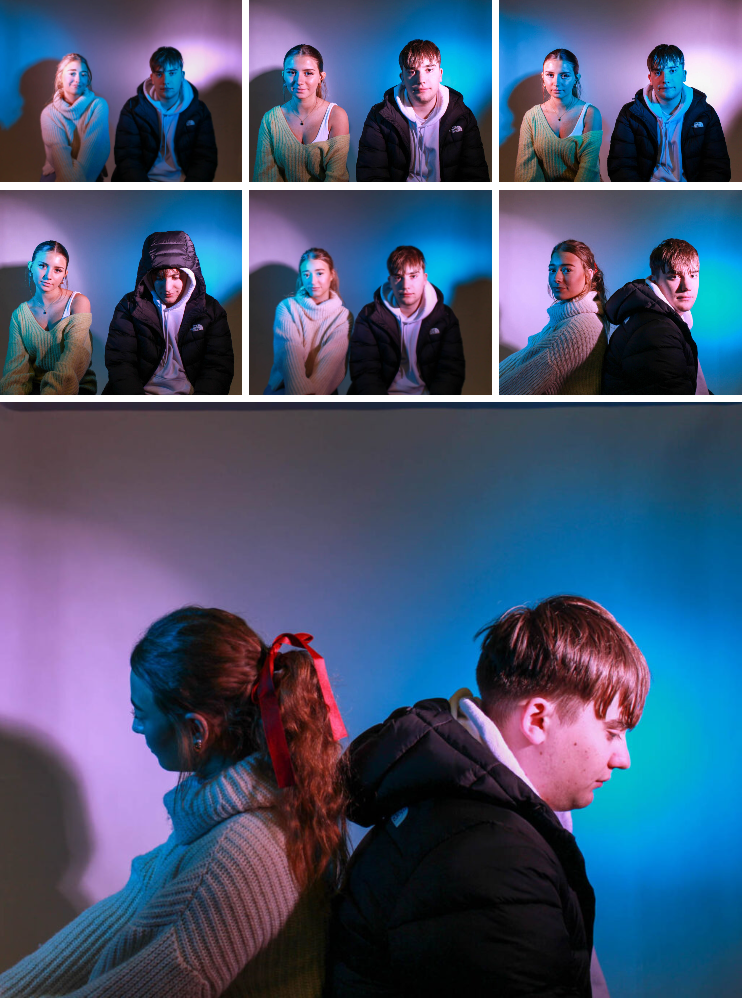

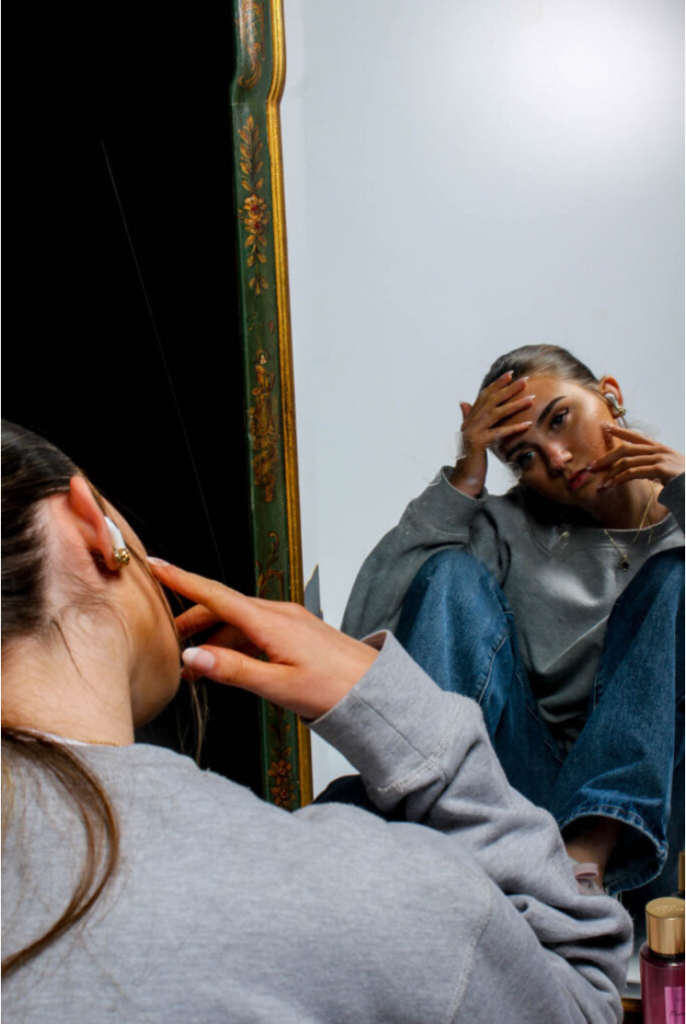
Evaluation
What went well- I really enjoyed this topic, because it was something I was able to write a lot about and really dive into, because it really interested me and I enjoyed it. I also enjoyed the freedom I had for my images, because I could display femininity and masculinity in any way I wanted. I also enjoyed how I was taking photos of people, because that is my favourite photographs to take, because I am able to have them pose the way I’d like and I just find the photos more interesting. I also enjoyed editing these images and creating black and white versions of these images. I also enjoyed the use of props in some of these images.
Even better if- Next time, I would try and experiment with masculinity slightly more, and I would work on my lighting technique slightly more, so I don’t create shadows on the background.
Anthropocene
What I did- For the Anthropocene topic, I explored three issues, which were; abandoned buildings, litter on the beach and industrialisation.
How I did it- For abandoned buildings, I took inspiration from John Divola, and I explored different abandoned buildings in Jersey, such as St Saviours Hospital and Bouley Bay Hotel. I took pictures of the rubble left there.
For the litter theme, I went to Harve Des Pas beach, and I walked along the beach looking for litter and cigarette butts and I took photos of all the litter I saw. Then, I used the litter I had found and collected on the beach to make patterned photos out of it in the studio, in response to Barry Rosenthal.
Finally, I took photos of industrialisation, especially in town.
My Images

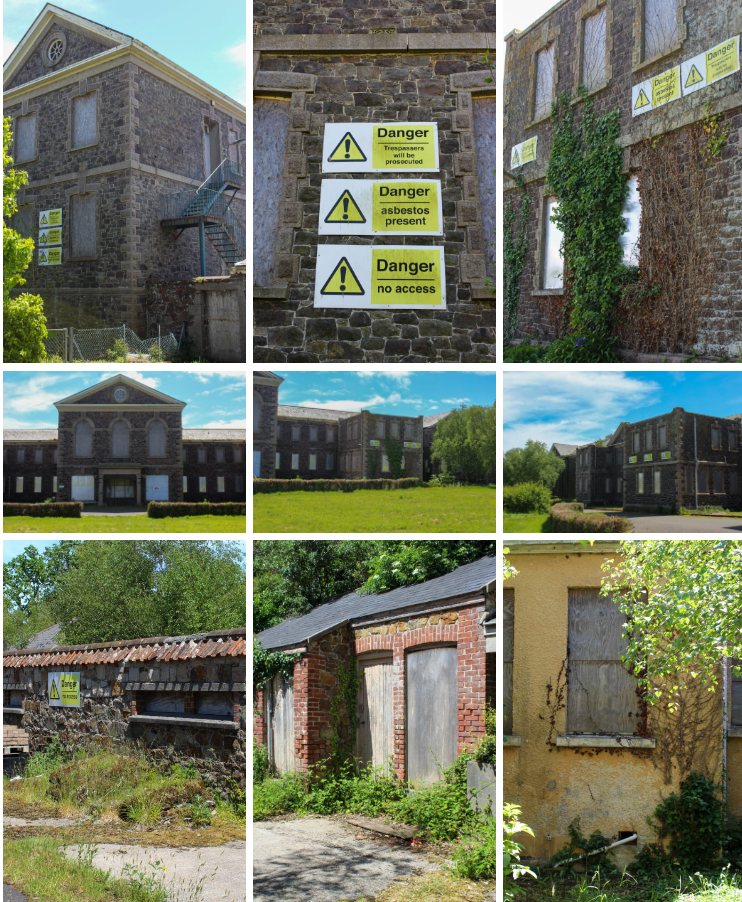
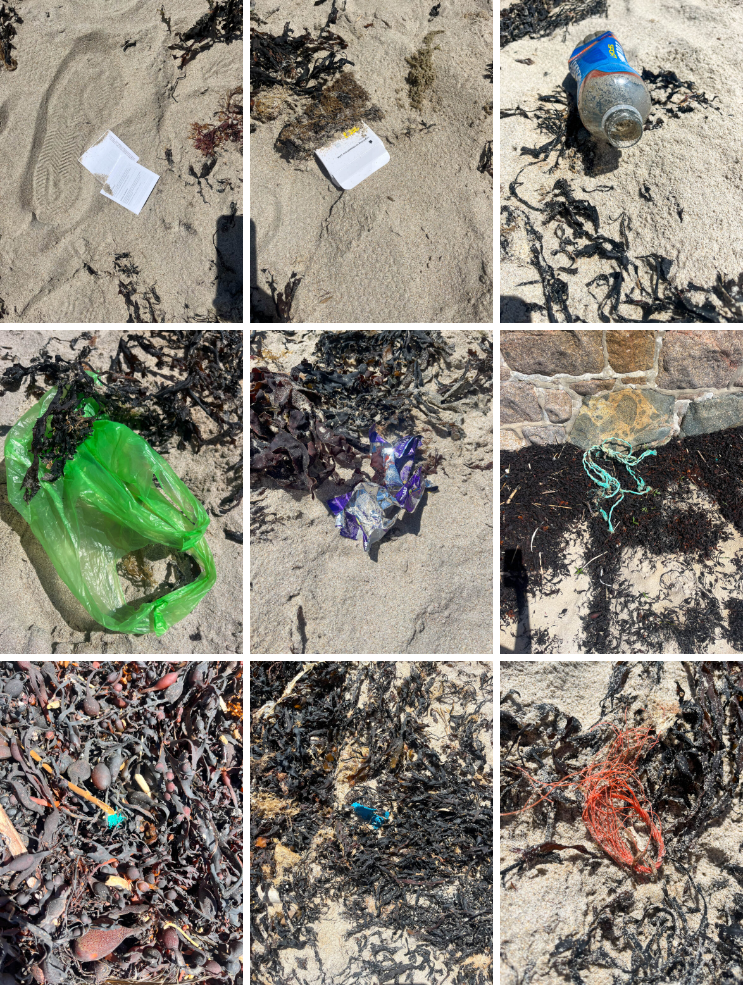
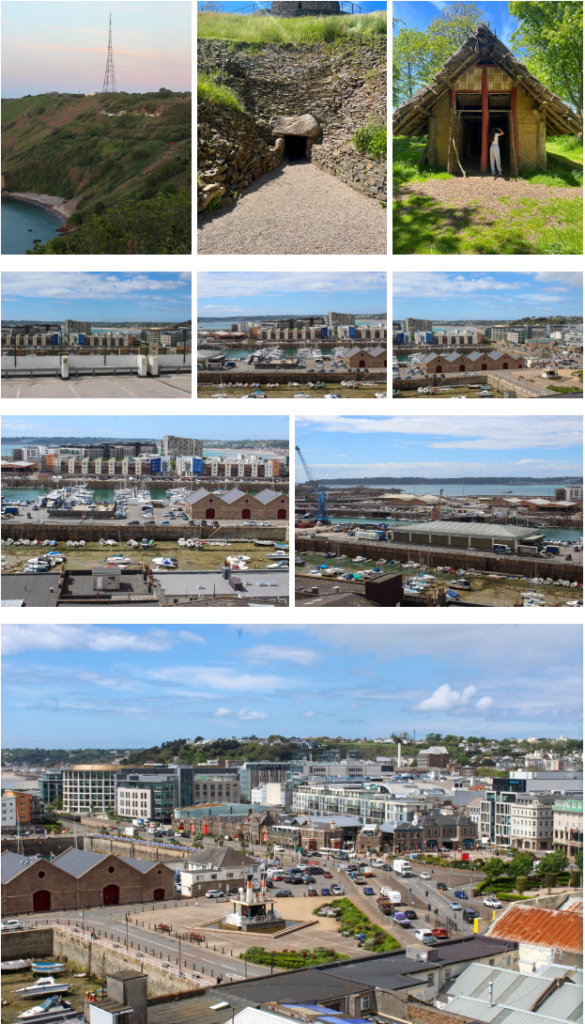

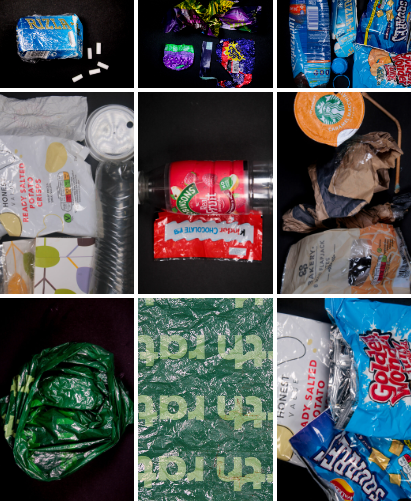
Evaluation
What went well- I really enjoyed taking pictures of the abandoned buildings, which is different for me, because I much prefer portraiture. I think I enjoyed this because I enjoyed exploring these abandoned buildings. I also enjoyed editing these images in colour and black and white. I also experimented with photoshop for this topic, which I thought went really well. I used things such as AI.
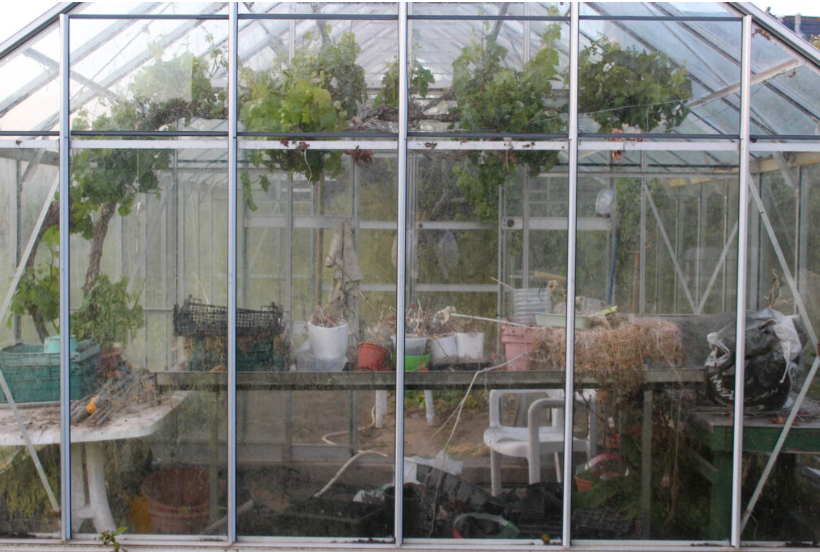
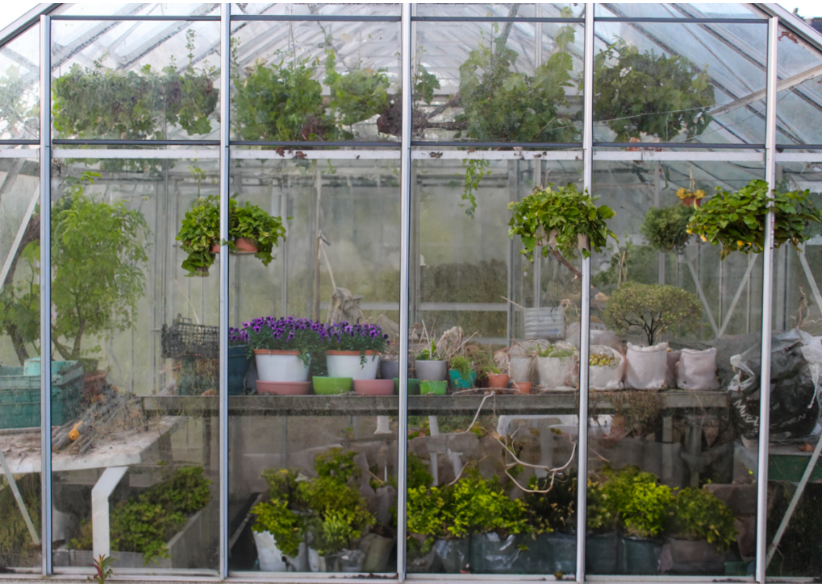
Even Better if- However, I didn’t enjoy taking photos of litter and industrialisation as much, because I found it quite boring, because I was quite uninterested, so I would not want to do this again.
St Malo
What I did- I took street photographs, which are candid shots of people going about their day to day lives.
How I did it-I observed the people around me and waited for the decisive moment (Henri Cartier-Breson).
My Images

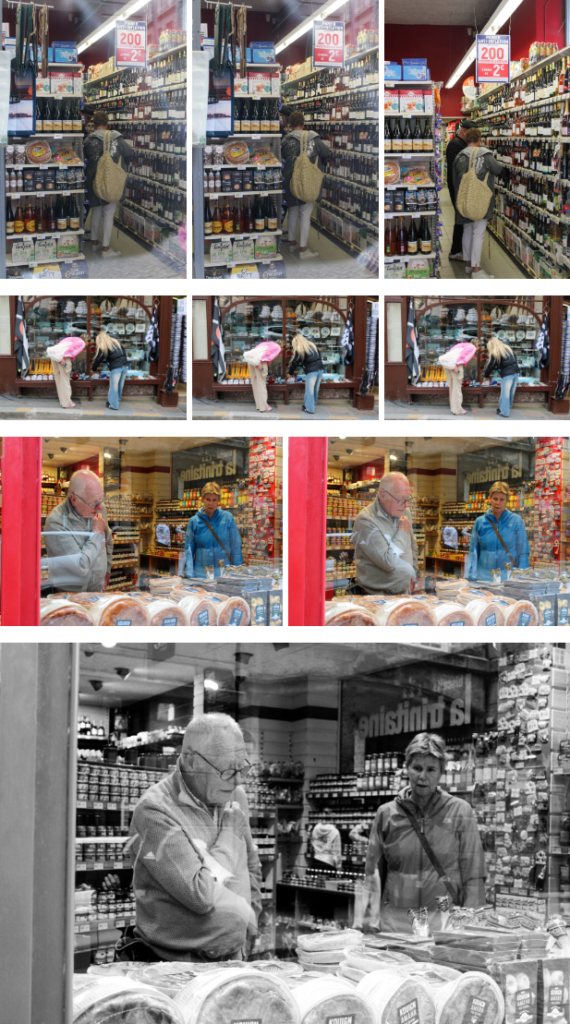

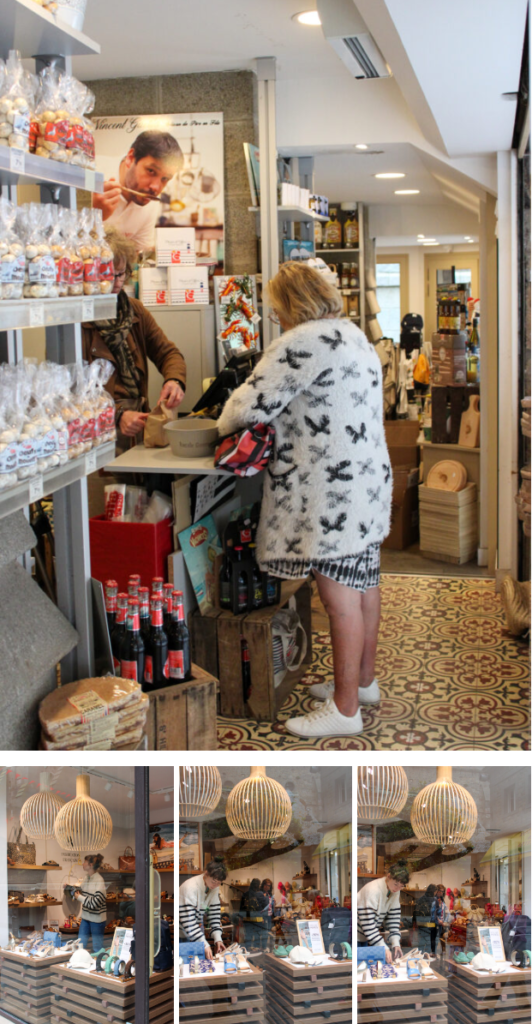





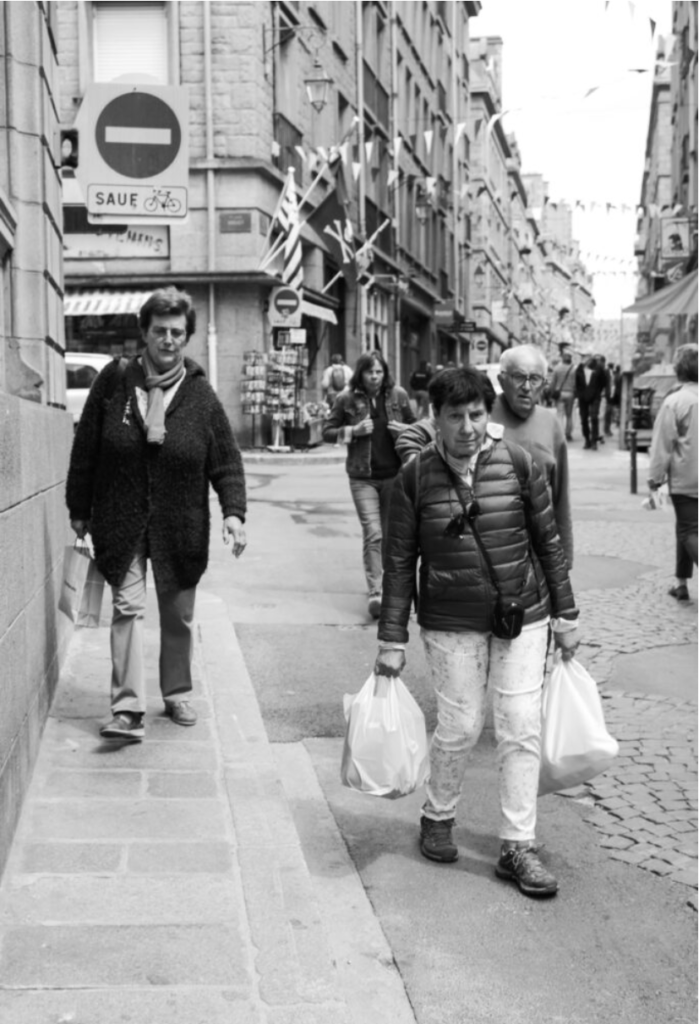



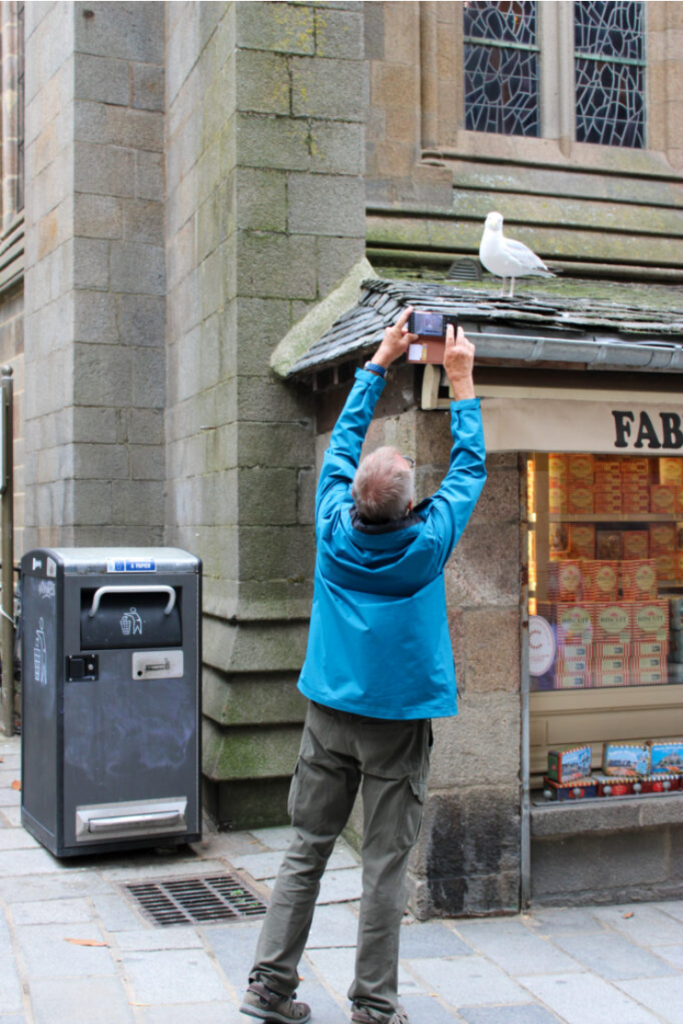

Evaluation
What went well- I really enjoyed this trip to St Malo, and I really enjoyed taking these street photography images, because I much prefer taking images of people. I also captured lots of good images, using head shots and hip shots, so I could try and go undetected. I also experimented with photoshop at lot in this topic, more than any other topic. I experimented with motion blurring, colour selecting, and lots of different ways to crop my images. I also enjoyed making this zine, but usually I do not enjoy making them.






Even better if- If I were to do this again, I would try get a few more closer up shots, while still trying to be undetected, and I would try to get more photographs with peoples faces in, rather than their backs.
Jersey Harbours
What I did- I visited the harbour, as well as the fisheries in it and the maritime museum. I also visited the fish shop, where they sold all the fish. I took photos of anything that I saw that related to what I had been researching, such as the cod fisheries in the maritime museum. I also took images of people, boats, the harbour, fish, graffiti, information, maps and anything else I found interesting.
How I did it- I started at one end of the harbour, at the maritime museum and made my way down, making sure I took pictures of everything. I also asked people if I could take portraits of them.
My Images

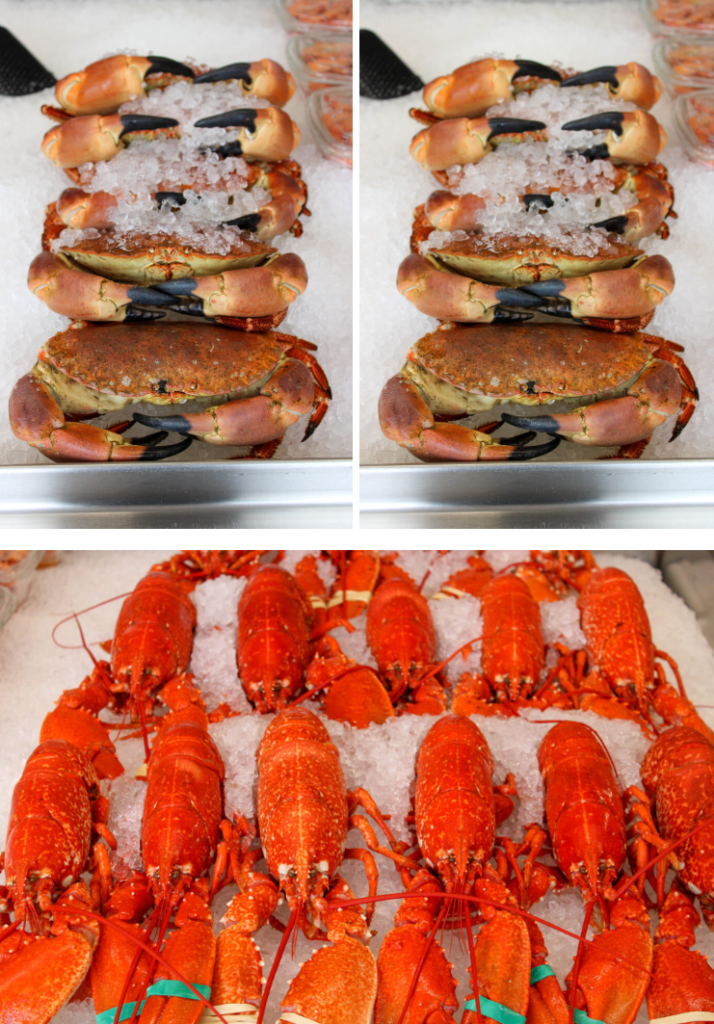

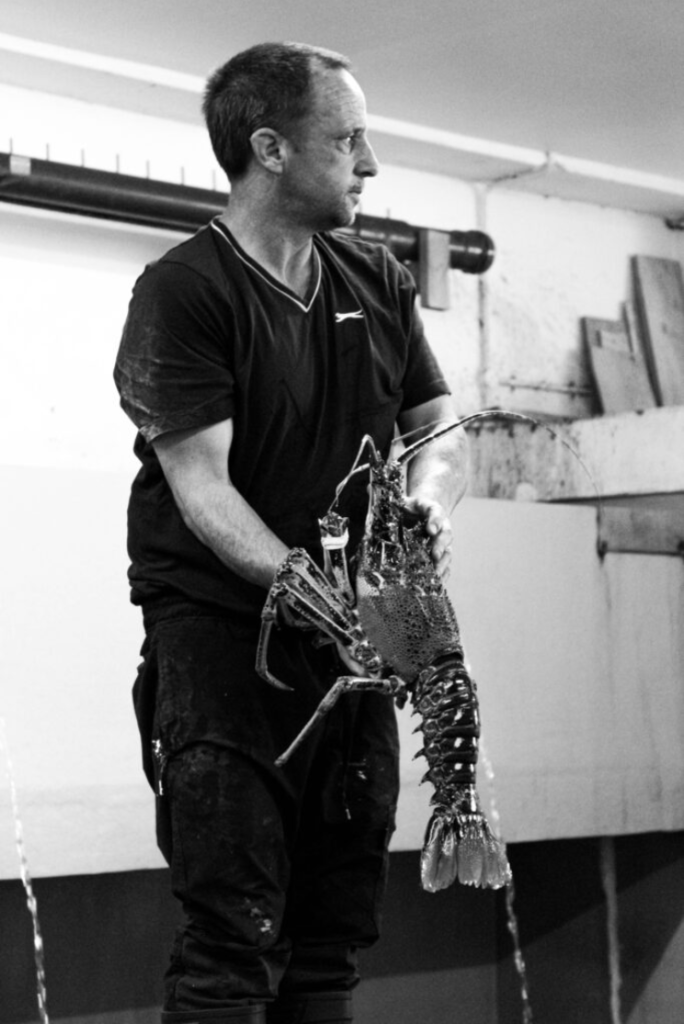


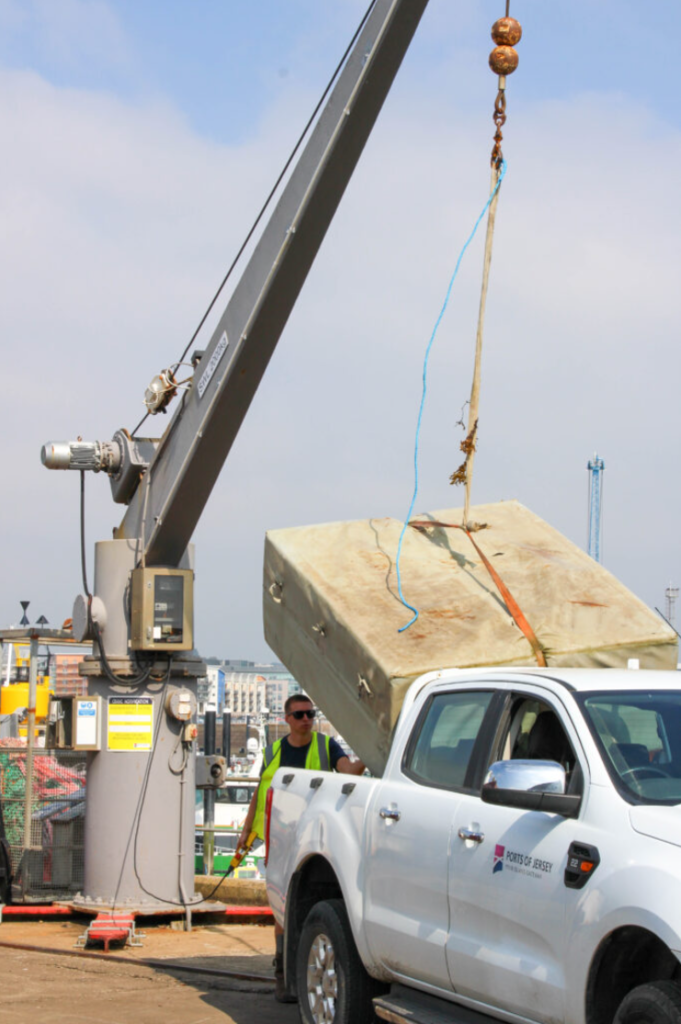

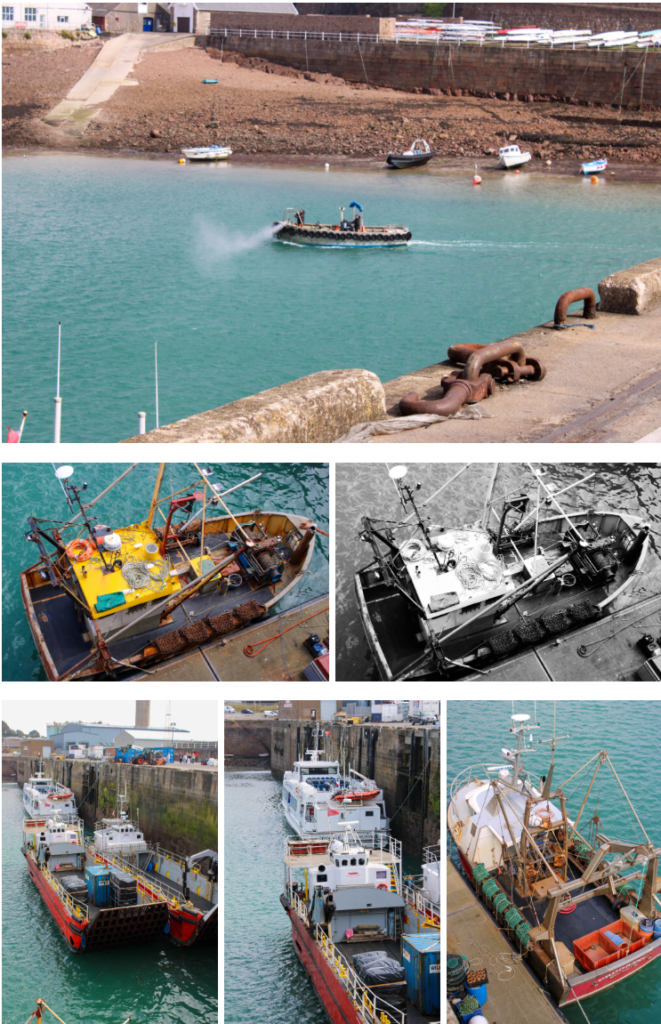
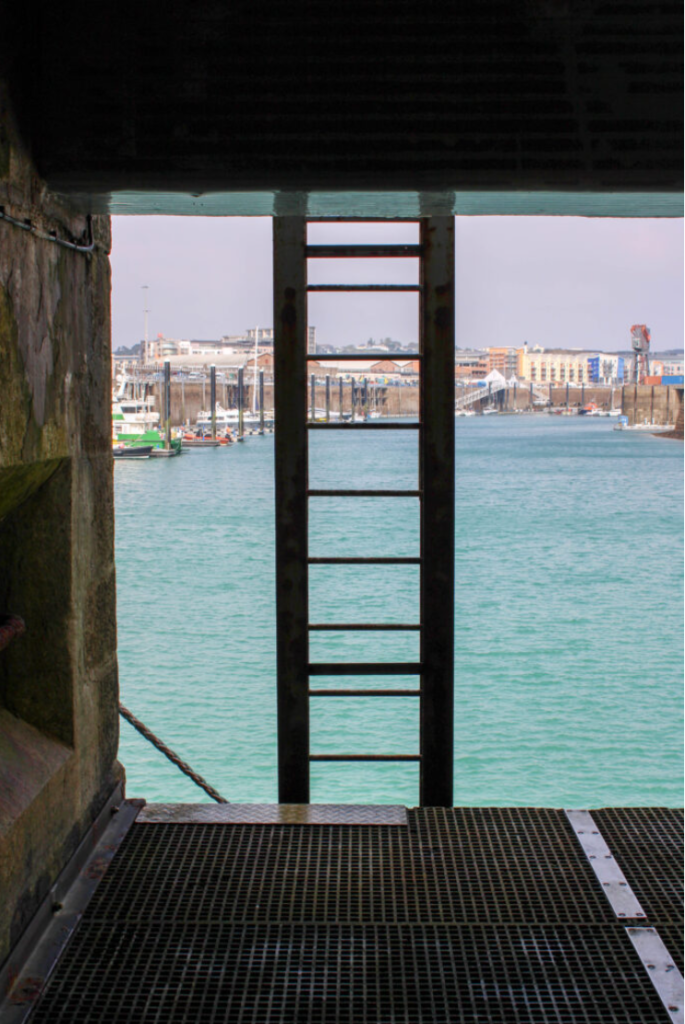

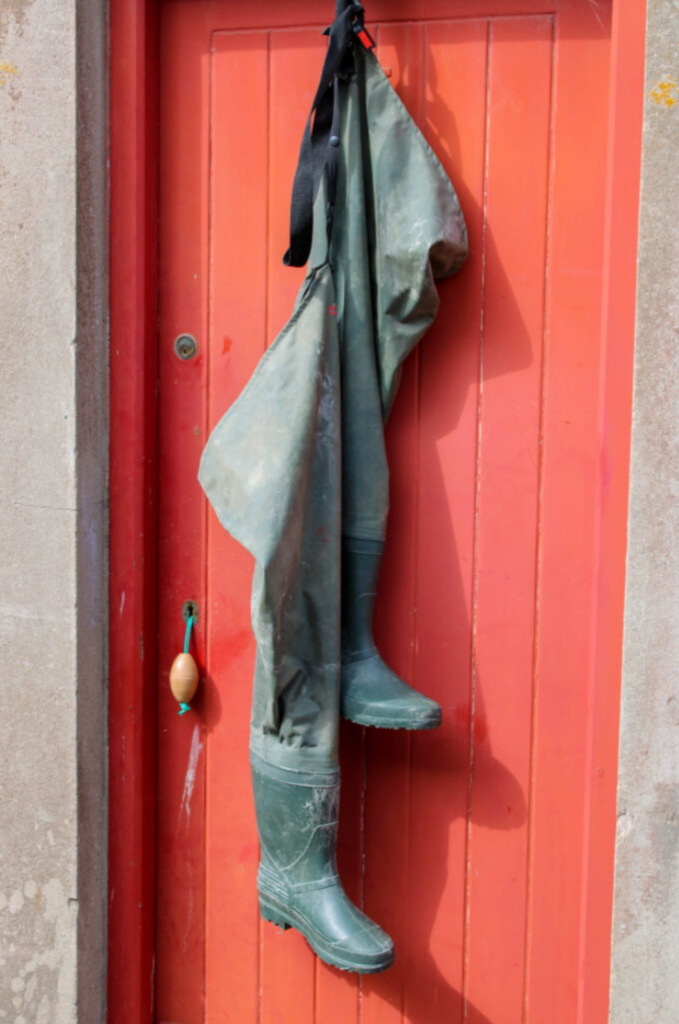





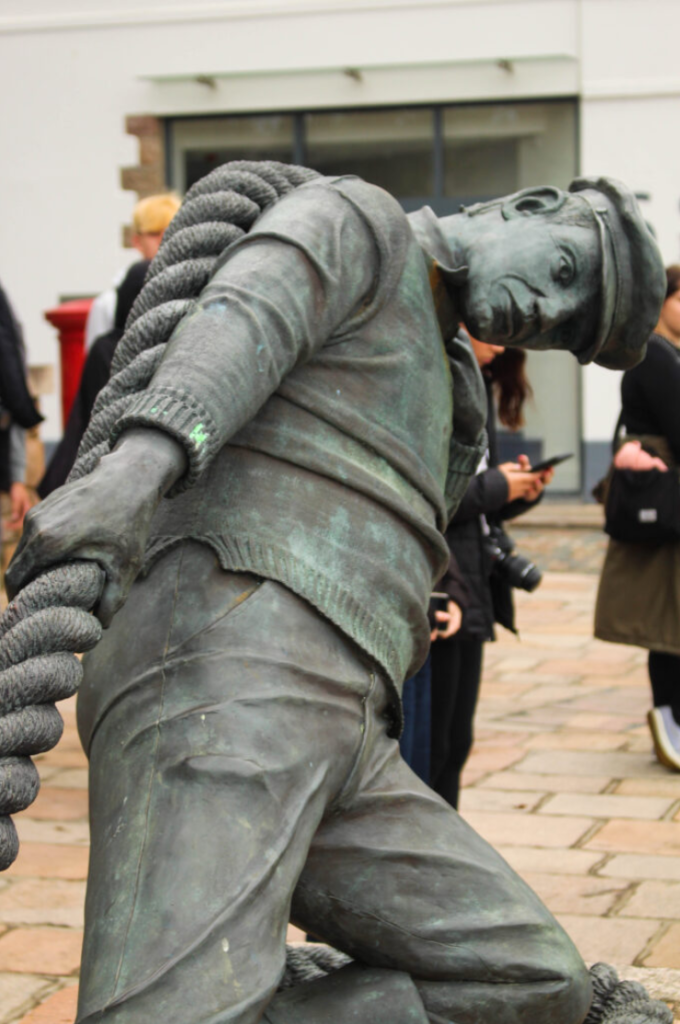
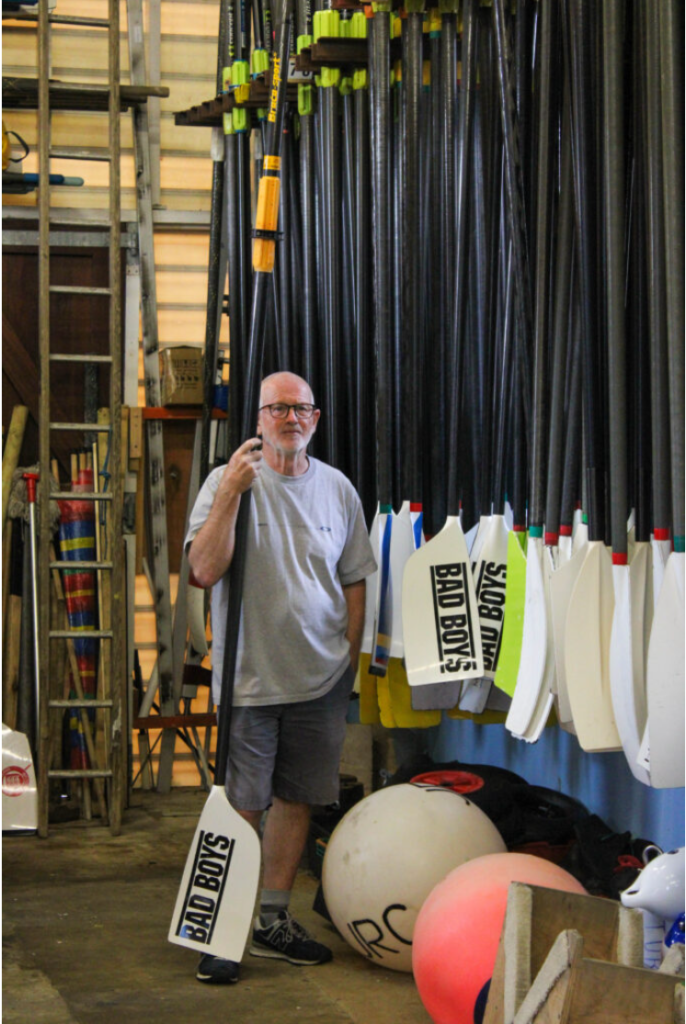

Evaluation
What went well- I really enjoyed taking pictures of the fish, because I thought they came out really well, and I enjoyed being able to visit the fisheries with all the alive shellfish still inside. I also enjoyed visiting the maritime museum, but I didn’t enjoy taking photos in there and none of them came out very well. I also enjoyed editing these images. I also asked people if I could take portraits of them. I enjoyed taking these portraits, because it was a lot more fun that taking images of the harbour and I much prefer taking images of people.
Even better if- Next time, I wouldn’t visit the maritime museum, because the photos weren’t very good. I also wouldn’t want to walk round the whole harbour again, as I found it very boring. I only enjoyed taking images of the fish, rather than the boats and the rest of the harbour.
